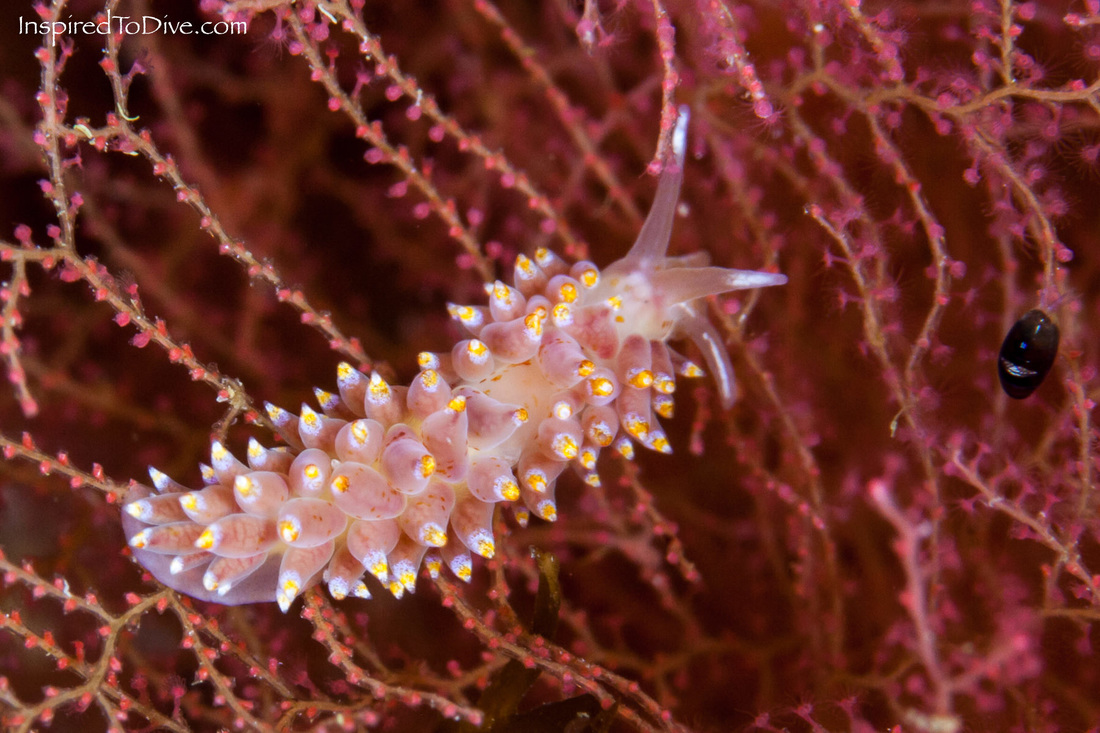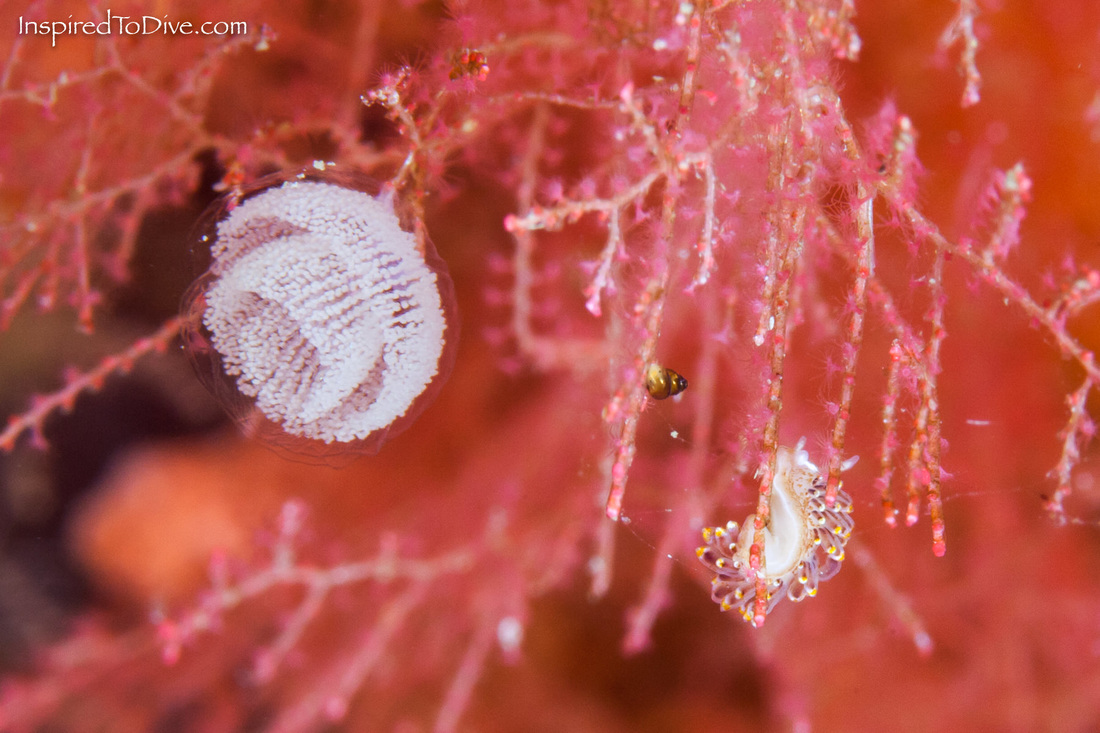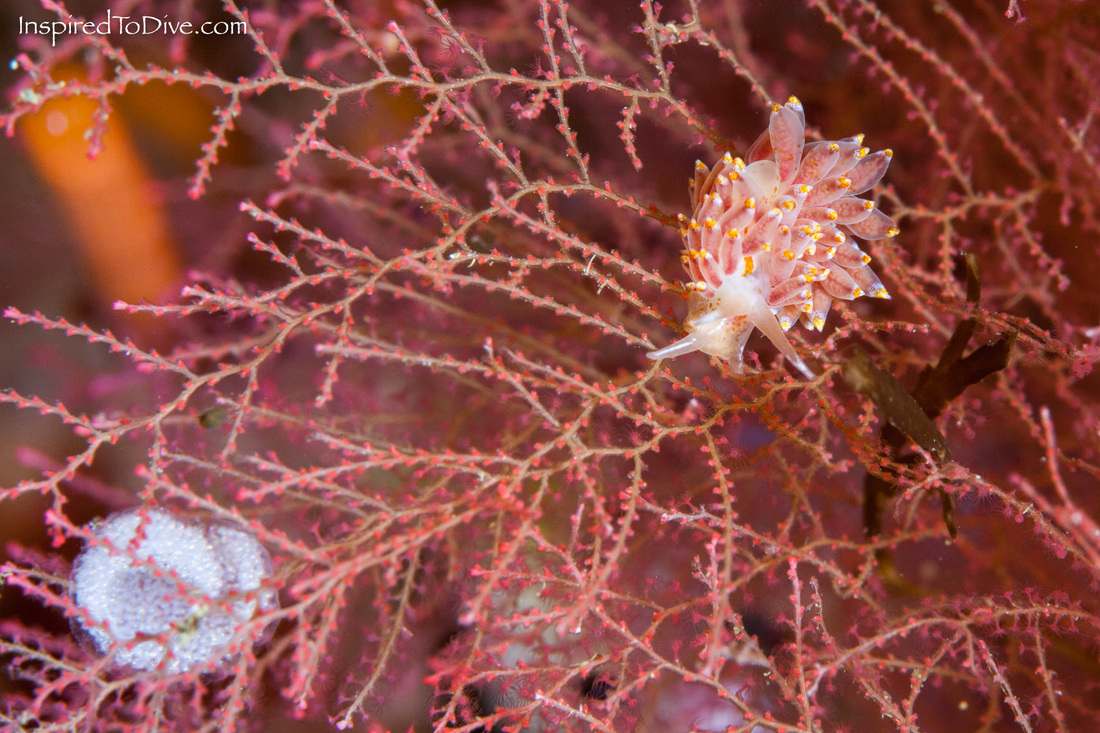15th October - I was scuba diving at night in French Cove at the Poor Knights Islands. It was one of those sloppy weekends when there’s enough of a swell running so that shooting macro is like trying to hammer a nail in a washing machine... a bit painful.
Mooching around at about ten metres I spotted some small white egg coils. The flash of white in my torchlight grabbed my attention; I saw a small nudibranch moving on a red hydroid. Closer examination revealed three animals and I fired off some shots as best I could in the conditions. I had a feeling this might be a night-active nudibranch. I pictured it hiding within the bushy hydroid during the day. That theory was shot to pieces the next day when I spotted a similar active animal on a reef wall outside of Matt’s Crack. Neat white egg coils were there too.
Fiordland in the deep south of New Zealand is a long way from the Poor Knights Islands. We do have nudibranchs that live across this range though. Jason mirabilis and Aphelodoris luctuosa are two examples, commonly found from Fiordland to the Knights.
I turned to google to try to find out more. The Sea Slug Forum popped up. In 1964 Burn described Eubranchus rubeolus from a single specimen found in Victoria in Australia. In 1971 Miller identified 4 specimens from Dunedin. Then everything went quiet, until Ian Skipworth photographed some animals in Fiordland in 2006. I ran into Skip at a BBQ recently and I asked him about Eubranchus rubeolus. He said he encountered the species just that one time in Fiordland, no encounter since.
Now a nudibranch that looks like Eubranchus rubeolus shows up at the Poor Knights Islands. 1964, 1971, 2006 and 2016 - that’s a long time between records. Clearly an expert opinion was needed so I emailed Dr Richard Willan, Curator of Molluscs at the Museum and Art Gallery of the Northern Territory in Australia. Dr Willan studied side-gilled sea slugs and sea hares at the University of Auckland. He knows a staggering amount about New Zealand's nudibranchs. I’m lucky to be able to call on his help in identifying kiwi underwater molluscs.
Dr Willan reviewed one of my images and took a look at Skip’s photo from Fiordland. While the nudibranchs look similar to my eye, he concluded "differences would certainly exceed variation within a single species". What does that mean? It looks likely that this is a new species of nudibranch.
I'm not laying claim to discovering a new species. We don't have a cohesive group of nudibranch enthusiasts in New Zealand. I can't say how many photos of this species might be floating around. So I'm putting my images and information out there in the hope that it can become an online resource to connect others who might be interested in learning more or sharing more.
Thanks to the power of social media my story doesn’t end here. On the weekend Shane Housham from Northland Dive photographed a similar nudibranch. I wasn’t surprised to learn that his discovery came from Danger Rock, a known nudibranch hot spot just south of the Bay of Islands. He observed a single animal. I note that his images do not show the nudibranch on the red hydroid that appears to be its food source in my images from the Poor Knights Islands.
Here's what I know about Eubranchus sp.
I need your help to learn more! Have you seen this species? Now is the time to look and look hard. Nudibranchs have a tendency to be short-lived which can make them fleeting in time. I have observations from three different northern dive sites. Can you add to this? Please contact me if you think you’ve seen this species.



 RSS Feed
RSS Feed

